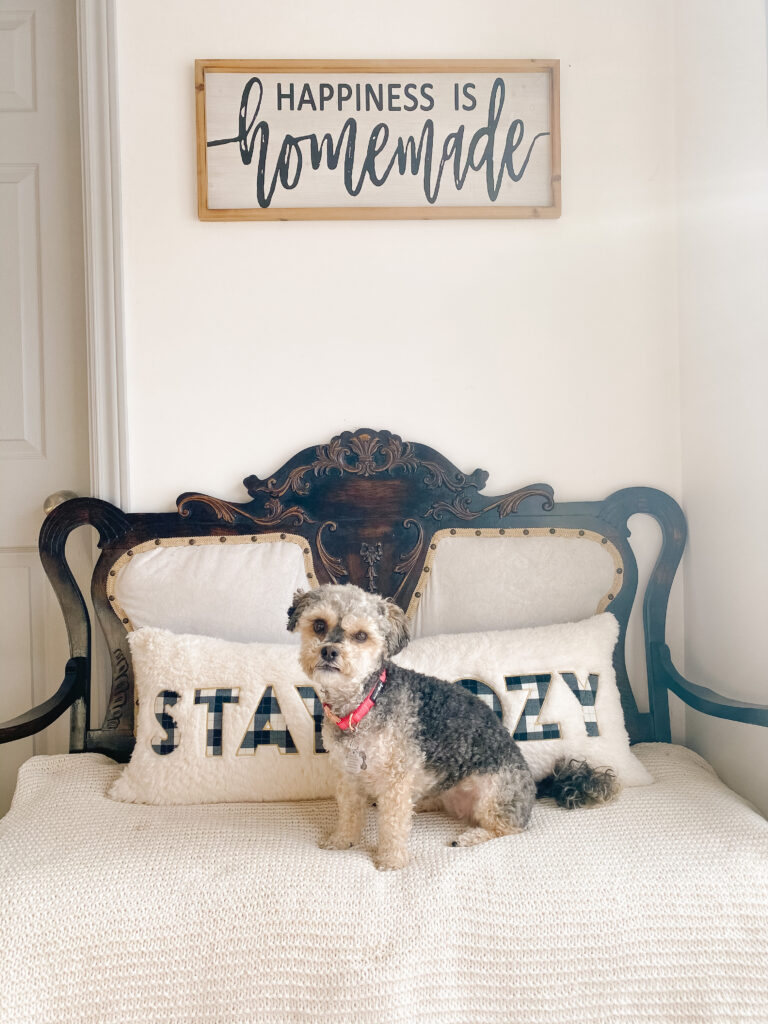Top 10 Gluten Free Questions
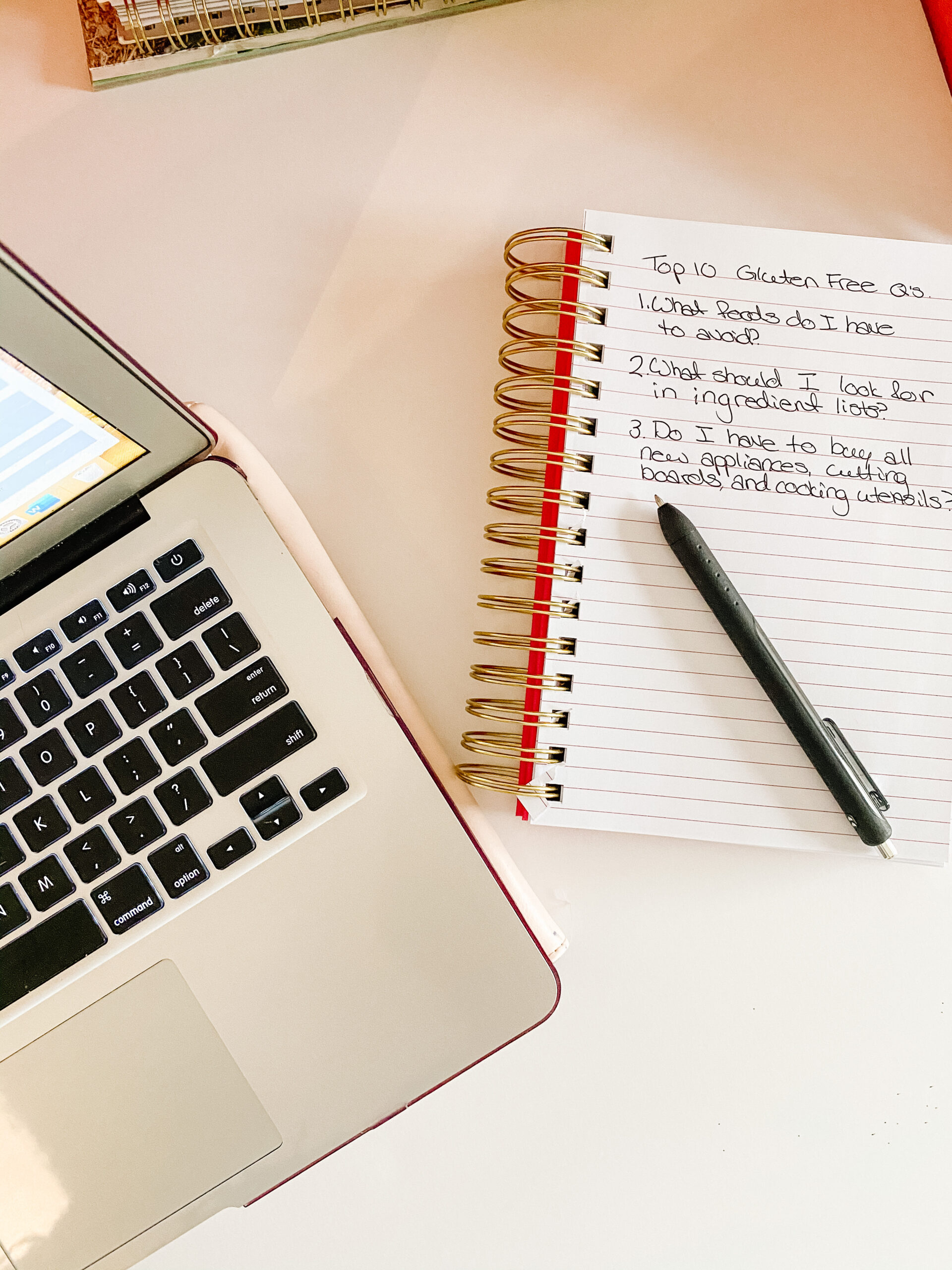
I want to preface this post by saying that I am not a doctor, I am not a nutritionist, or a professional working in the field of celiac disease or gluten free diets. However, I was diagnosed with celiac disease about 7 years ago and have learned a lot over the years. Since my diagnosis I have been asked so many questions, as others around me try to learn or have been diagnosed themselves. So there are the top 10 gluten free questions that I have been asked, or have seen asked more commonly over the last 7 years.
There are many other gluten free questions yet to answer, but I will answer more of those over time. I will also start a page that includes our favourite products for cooking and eating gluten free. So without further ado, these are our Top 10 Gluten Free Questions, all answered for you.
1. What foods do I have to avoid?
The best way to remember what foods to avoid when having celiac disease or gluten intolerence/sensitivity is BROW. Barley, Rye, Oats and Wheat. If you keep this in mind when shopping and eating. This will help you know what you can and can’t eat. Make sure to always avoid BROW.
2. What should I look for in ingredient lists?
When shopping for food, be sure to always check the ingredients list. This will tell you exactly what is in the product, as well as what it contains or may contain. In Canada, as celiacs we are taught to trust the labels on our products. If a product was any wheat in it, the contains or may contains statement will include it. You still need to read the ingredient list to double check for BROW or gluten. You do not need all of your food to say gluten free or certified gluten free, but you have to make sure that it does not contain or may contain wheat and gluten.
3. Do I have to buy all new appliances, cutting boards, and cooking utensils?
If you’re switching your entire kitchen to gluten free then I would say yes. Switch your cutting boards, plastic and wood cooking utensils, toaster and any baking tools that have any really baked on food. You definitely do NOT need to get a new microwave, fridge or stove/oven. All of those appliances can be easily washed and wiped down with soap and water. The most important appliance to replace is your toaster or get toaster sleeves. If you use wood cutting boards you will want to replace them as wood absorbs the food and can have crumbs in it. If you’re having a shared kitchen refer to gluten free question 8.
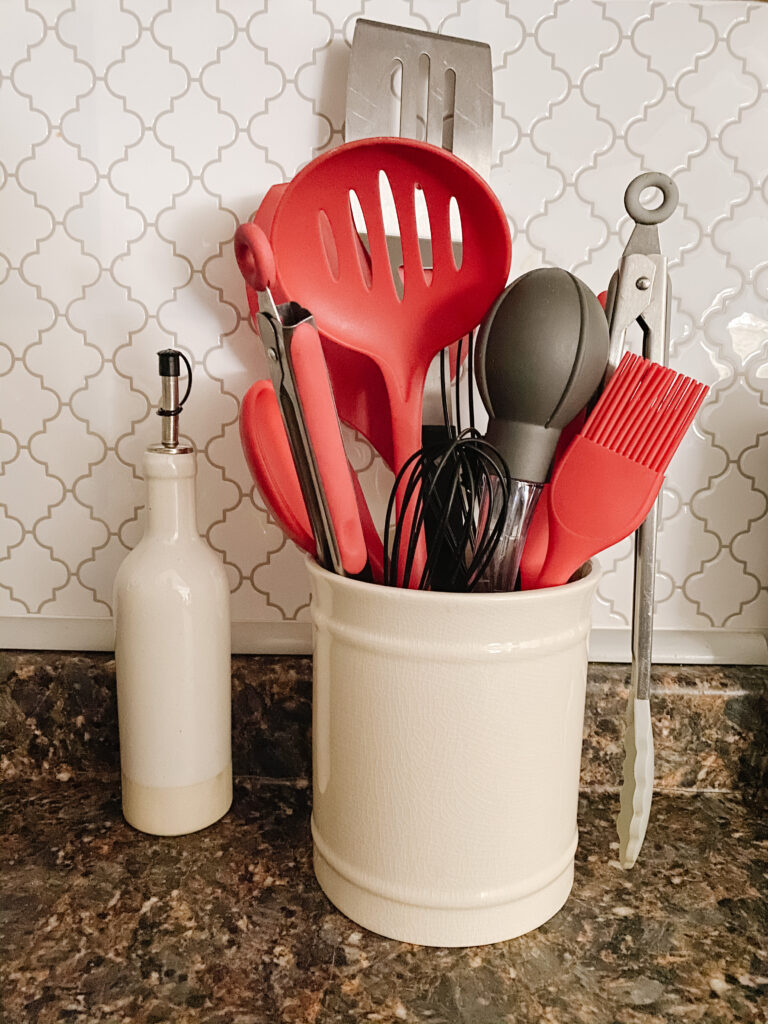
4. How long does it take to feel better after going gluten free?
As I mentioned, I am not a doctor but based on what I have read and information from the Canadian Celiac Association. It generally takes 1-3 months to start feeling better once you have gone gluten free. Then it takes about 1-3 years before you have healed your intestines/gut health. This takes constant everyday work to help heal your body and start to absorb nutrients and vitamins again.
5. What is cross contamination? Is it really a big issue?
Cross contamination is a huge issue for people with celiac disease and gluten intolerance/sensitivity. This could be anything from a regular gluten containing crumb getting into your gluten free food. Eating something that was prepared on the same surface as gluten before hand, or fried in the same oil as something containing gluten. This is why it is important to have some separate small appliances in your home like a toaster. And why it is so important to let people know you have celiac disease. In restaurants they need to know that you’re eating gluten free because you have celiac disease not because you don’t want to eat gluten. The smallest crumb could make you have a reaction or do damage to your healing intestines.
6. Can I still eat out at restaurants?
Yes! You can definitely eat out at restaurants still, however, this is a bit trickier. Before you go to the restaurant, look up there menu online and see if they offer any gluten free items. If you don’t see this, then I suggest you call them and ask if they offer gluten free and what their handling practices are like. Very few restaurants are completely gluten free or offer a gluten free safe areas that no cross contamination occurs. I personally know that every single time I eat outside my home there is a high risk of cross contamination. Also keep in mind that even if you do not have a reaction at a certain restaurant it does not mean that cross contamination did not occur and you are suffering inside. Overtime, we have found the restaurants that I am comfortable eating in but this takes time.
7. I’ve been on a gluten free diet for a while but still feel sick?
As I mentioned in question 4, it takes a long time to start to feel better after going gluten free. Your insides are damaged and in some cases severely damaged, so healing takes time. You don’t break your leg and expect it to heal overnight and it is the same way when going gluten free. Expect to feel better within 1-3 months, but true healing won’t happen until around 1-3 years. Your doctor should retest you as time goes by to make sure your levels are going down and healing is occurring.
If you’re still feeling sick after a long time, you need to make sure you have no cross contamination happening. If your home is 100% gluten free then look outside your home for the source. And look at all the products in your home; mistakes happen and maybe you thought something was gluten free and it’s not. If your home is not 100% gluten free, re-visit with your family and go over the best practices for sharing a kitchen and living space while have celiac disease (check out question 8).
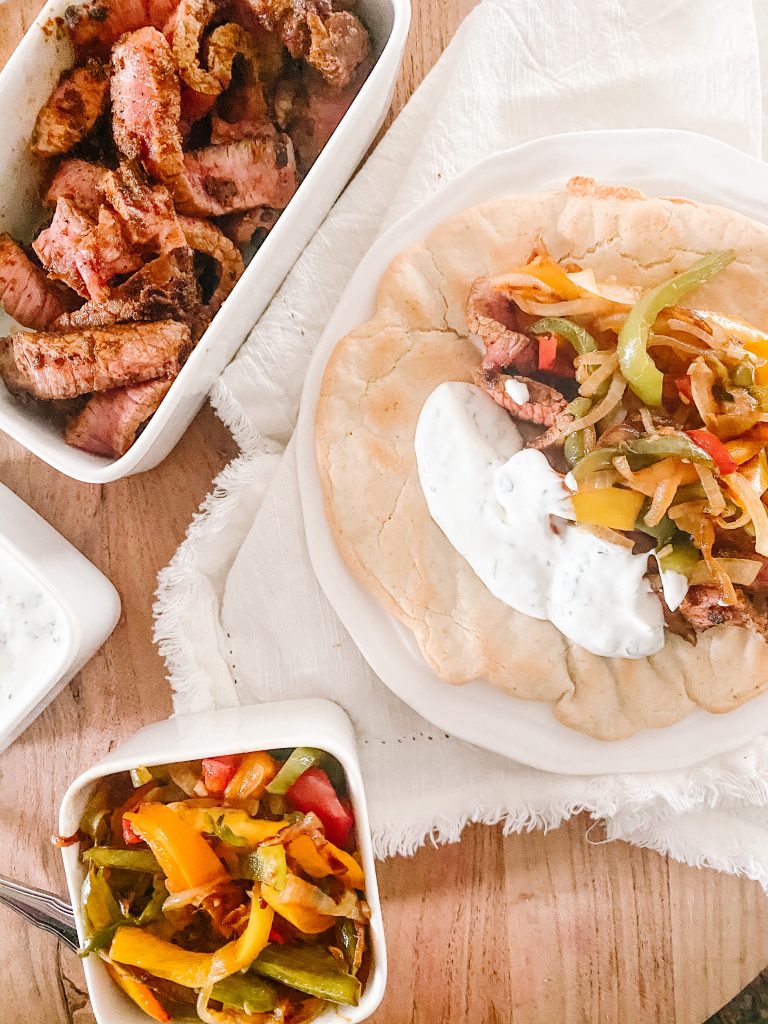
8. Should my home be 100% gluten free?
Many people with celiac disease decide to have a 100% gluten free home. I find that this is a personal choice. Matt and I do not have a 100% gluten free home. At one time this was my dream but I do not feel it is fair to Matt to force him to never eat gluten, especially with the option of eating out is off the table right now (due to Covid). This may change when we have kids. However, if your partner, family or roommates still want to eat gluten there are a number of things you can do to ensure you are in a safe environment.
A. Buy a separate toaster
I have mentioned this above and it may seem silly but, if you’re planning on having toast buy a separate toaster and keep this tucked away. I keep mine in the cupboard and Matt’s out on the cupboard. This is because I am so scared that someone will be over at our house making toast (this has never happened) and they will put gluten toast in my gluten free toaster. It’s a bit of an irrational fear but it makes me feel better. We also clean under and around the gluten toaster a lot so there are no crumbs on the counter that could get into my food.
B. Have separate condiments
When I lived with my parents I had a separate butter in the fridge, peanut butter in the cupboard, etc. We would put my name on it and write GLUTEN FREE so that no one would accidentally use it. In our home now we do not have separate condiments, but Matt always takes what he wants with a knife or spoon, puts it aside and then puts it on his bread. If he needs more, he has to grab a new knife/spoon, NEVER double dips into containers. This works for us since Matt is so aware of celiac disease and has been cooking for me since before my diagnosis.
However this may not be the case for your family and friends. If someone does double dip or accidentally contaminate your products don’t get upset. Make it clear from the very beginning that if someone accidentally puts gluten into the gluten free product, that they need to let you know immediately and you won’t be upset. This will prevent you from accidentally consuming gluten and the person won’t feel like they have to hide it. Squeeze bottle condiments are also great, whenever they are available we buy them.
C. Wipe counters regularly and wash your hands constantly
Anytime someone has cooked, they should wipe down all of the cooking surfaces. This helps to prevent crumbs from spreading. There is nothing worse than someone making a sandwich, not wiping the counters and then you putting your gluten free food directly into their crumb mess. Also make sure everyone is washing their hands constantly while working in the kitchen. So that if they touch cupboard doors, the fridge, etc., they are not contaminating everything. This is also just good kitchen manners.
D. Have separate cutting boards
Wood cutting boards absorb food, so have separate ones. Our cutting boards are made of a wood fibre pressed composite and food does not absorb into them. They are also great for not dulling your knives. In saying that, Matt generally prepares his gluten food on a plate. It should also be noted that you shouldn’t use wooden utensils unless they are dedicated gluten free. We have switched our entire home to silicon cooking utensils.
E. Prepare gluten free food first
If you’re preparing both gluten free and gluten food, always prepare gluten free food first. This will prevent any cross contamination from occurring. If you’re cooking in an oven make sure that the gluten free food is on the rack above the gluten food so that no spillage gets into the gluten free food. If you’re BBQing, if the BBQ is clean and I mean disinfected/extremely clean then make sure your food has been cooked first. Otherwise have your food cooked first but use a grilling mat. So that no contamination can occur. Closer to the summer I will do another post on BBQing and sharing a kitchen with extended family such as in a cottage situation.
F. Store food separately
Store the gluten containing food separately to the gluten free food. This also ensures no cross contamination. Matt has bread in the house, as well as snacks so we keep these in a separate cupboard or bag so that they don’t get mixed together. You don’t want someone who just touched gluten to be messing around with your gluten free products.
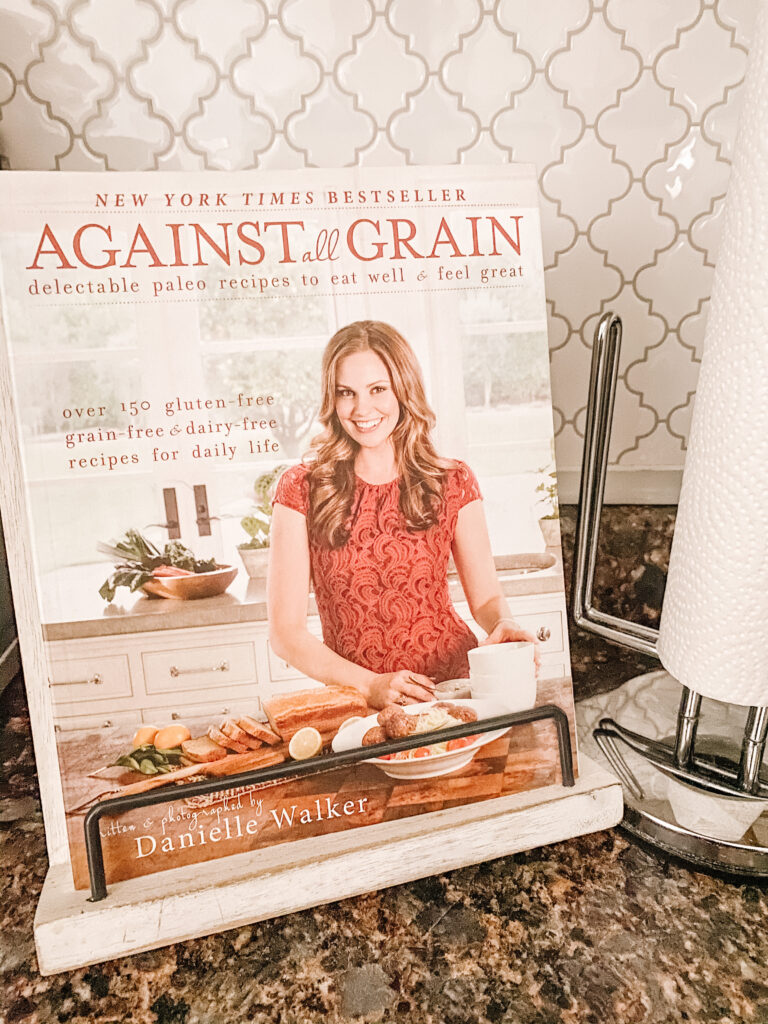
9. What can I do to help a loved one that has celiac disease/is gluten free?
If you’re not the person with celiac disease but a friend or family member trying to support someone with celiac disease. There are a few things you can do to help them. If you have found your way here that is the first step. Finding out any information about the disease can help tremendously. Understanding what the disease is and how it affects someone that has it. Everyone’s symptoms tend to be a bit different but a general understanding is great. Also learning about hidden gluten in products and cross contamination is a game changer. If you’re cooking for someone with celiac disease; you need to know the best handling practices. Research recipes and products.
But the best thing you can do is be supportive. If this is just lending an ear for the person to vent their frustrations, or going out of your way to make them feel comfortable and safe eating in your home, everything helps. Always make them feel included, whether this is when going out to eat or at dinner parties. In my experience, it is better to make a meal naturally gluten free for everyone, compared to singling out the person who has a dietary restriction.
Ask the person questions or include them in the planning process so they feel comfortable. If they want to bring their own food do not feel offended. Celiac disease is a life altering diagnosis and if bringing their own food makes them feel better, you should support that. Ultimately this is about the person with celiac disease, not you. I know that sounds harsh but it is way harder for the person going through the change than everyone else around them.
10. Where can I turn to if I have questions or need support?
If you are looking for more support, outside your doctor. Or your family isn’t supportive or understanding it is best to join the Canadian Celiac Association. Sign up for their emails so that you receive their newsletters. Join their Facebook groups. I am apart of the Canadian Celiac Association Facebook group which is everyone across Canada, there are also others separated by province. In these groups you can ask questions on products or recipes, or general gluten free questions. Most people will give great answers and want to be helpful. Everyone in the group is going through a similar situation to you and are understanding. So establishing a support group, even outside your home will help you on your gluten free journey and if you gave gluten free questions.
Enjoy Your Gluten Free Life
I hope that we have answered some of your gluten free questions. I know that there is a lot of information int this post, which can be overwhelming. Learning about celiac disease can feel daunting, but it is a day to day effort. In the beginning it is frustrating and there may be a lot of tears. But overtime it is truly worth it. Living a life that you’re not sick all of the time is amazing. You start to love food again, and you find recipes and products that you truly enjoy. It is a life long journey and does not happen overnight. You will mess up and make mistakes, even to this day 7 years later I still slip up and consume gluten by accident. But the next meal I keep working at being gluten free.
For me, overtime it has gotten a lot easier. I no longer crave certain foods. If someone if eating gluten around me, I don’t get upset. It is a mindset shift and the sooner your start looking at it as “this is for my health,” and not “I’m missing out on stuff.” It will change your life. So establish your support system, learn as much as you can, and start to enjoy your life again. If you have any other gluten free questions, never hesitate to message me. I responded the fastest on Instagram. I am always happy to help people with their journey and answer any gluten free questions that you may have. Now get into the kitchen and start cooking some delicious food!
